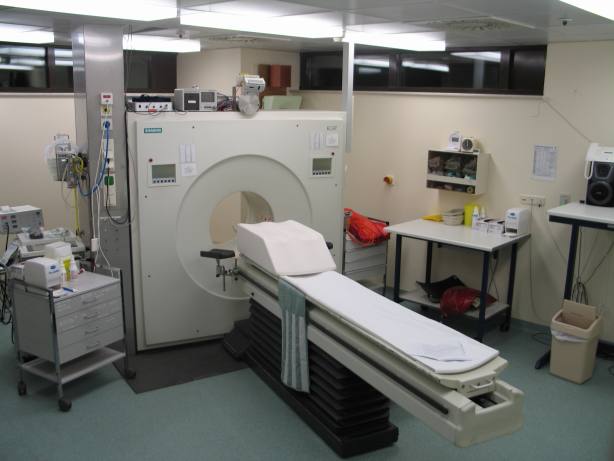Recently, a group of distinguished neuroscientists commissioned by the Alzheimer’s Association and the National Institute on Aging updated guidelines for the diagnosis of Alzheimer’s disease. The new guidelines view the pathology that leads to Alzheimer’s disease as process that occurs over many years, if not decades. As a result the panel developed different guidelines for different disease stages. Perhaps the most novel and interesting guideline is for a newly identified stage: preclinical Alzheimer’s disease.
The concept of preclinical Alzheimer’s disease recognizes that the brain damage that leads to dementia starts to develop many years before patients develop cognitive problems. For example, it is generally believed that amyloid deposits in the brain play a key role in the development of Alzheimer’s disease. Modern imaging methods can detect this protein in the brains of persons who are completely asymptomatic. Biomarkers in the blood and cerebral spinal fluid also suggest pathological changes that may lead to the disease. Preclinical Alzheimer’s disease would be diagnosed in a person who has no cognitive problems, but has signs of pathology on brain imaging or blood/spinal fluid biomarkers.
The guideline for preclinical Alzheimer’s disease is emphatic that the state of the science is not good enough to diagnose this stage in clinical practice. Currently, preclinical testing is only intended to be used for research. The guideline suggests that we will not be ready to use this diagnosis in clinical care until we better understand how biomarkers predict Alzheimer’s disease.
But I would consider taking this caution a step further. It may never be appropriate to recommend widespread use of the preclinical Alzheimer’s disease label.
The central problem with this diagnosis is that it labels people who have completely normal cognitive function as having an illness. A key question is whether using this label will make patients better off.
The challenge here is in distinguishing risk for disease with disease itself. There is considerable evidence that many, if not most, people with these biomarkers will never get Alzheimer’s disease. For example, autopsy finding suggestive of Alzheimer’s disease are commonly found in people who never had symptoms.
There are several reasons why one could have biomarkers suggestive of Alzheimer’s pathology and yet never develop dementia. First, in virtually all diseases, the link between the biological markers of the disease process and the clinical expression of the disease is highly variable. As our understanding of Alzheimer’s disease biomarkers improves, we may be able to give patients increasingly accurate risk estimates for developing dementia. But it is unlikely that we will ever be able to tell the vast majority of cognitively normal patients for sure whether they will develop Alzheimer’s disease.
Second, it one thing to have pathological changes that may lead to Alzheimer’s disease, but it is another thing to live long enough to develop dementia. Many persons with biomarkers of Alzheimer pathology will outlive their pathology.
This leads to an important philosophical issue. Pathological changes that do not lead to clinical problems are not disease. Pathological changes should only be viewed as disease if they are likely to eventually cause problems for the patient. A person who has pathological changes that are unlikely to cause symptoms is better classified as normal than as having preclinical disease. Diagnosing preclinical Alzheimer’s disease in someone destined to never have cognitive problems should be viewed as a misdiagnosis.
Patients will be better served if we think of biomarkers and brain images as measures of risk for Alzheimer’s disease rather than preclinical disease. This distinction emphasizes that the therapeutic goal is preventing clinical symptoms of dementia. Biological markers such as amyloid plaque are only relevant if they eventually lead to disease. Someone who has biomarker evidence of pathology but never gets the disease does not have preclinical disease. That person is normal.
This gets complicated because we do not know for sure in advance who will get dementia. But recognizing that the goal is preventing meaningful symptoms makes it explicit that disease labeling and treatment in someone who is never going to get symptoms is a diagnostic and therapeutic error. The recognition that there are potential harms to over diagnosis and treatment is essential if we are going to change the current culture of therapeutic excess.
Using biomarkers and imaging to gauge risk, rather than to label patients as having preclinical disease, leads to more rational decision-making. Instead of viewing patients as having an illness that demands treatment, we think about balancing the risks and harms of diagnosis and therapy. In the case of a patient found to be at higher risk of Alzheimer’s disease, we focus on how to keep her well.
Telling patients that they are at risk for dementia may still have negative consequences, the most obvious being the psychological impact. There is also the possibility that treatments developed to reduce the risk could have harmful side effects. But these consequences will be worth it to many patients if the ultimate result is a decrease in the chance of developing dementia.
In many cases, the utility of diagnosis and treatment will depend on remaining life expectancy. For example, a healthy 50-year-old who has a 50 percent chance of developing dementia in 30 years may accept a treatment with substantial side effects. But a frail 70-year old with that same risk may well reject such treatment. In fact the biomarker pathology in this patient is probably clinically meaningless. It may be prudent to not even look.
While we seem many years away from developing treatments to prevent Alzheimer’s disease, our evolving understanding of the pathologic changes that predate the disease may one day revolutionize management. Better ways of identifying persons at risk will clearly be necessary for finding strategies to prevent the disease. But as we learn to identify risk, we need to do so in a way that is more likely to benefit patients than harm them. Massively increasing the number of persons we label as diseased has many downsides. But well crafted strategies to reduce risk of developing dementia are very appealing.
This blog was originally posted on the Hastings Center Bioethics Forum
by: Ken Covinsky




